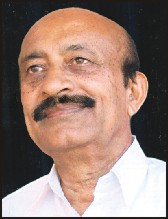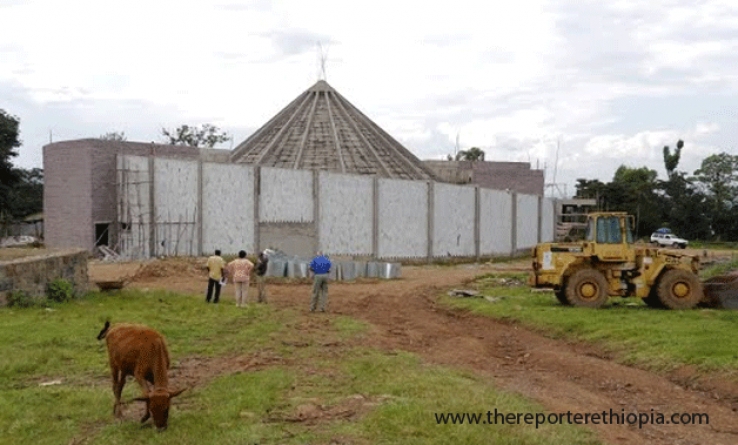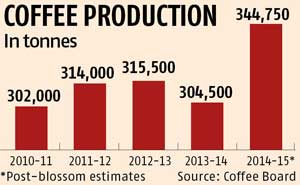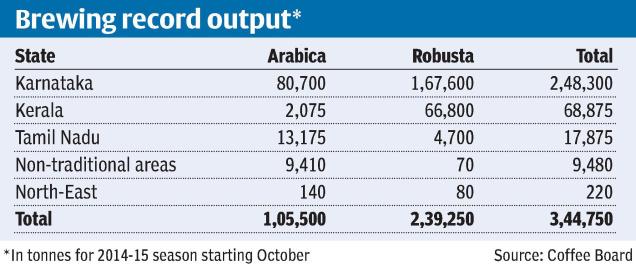
by K.B. Ganapathy
Former Law Minister and JD(S) leader M.C. Nanaiah, Merianda Chengappa Nanaiah to give him his full Kodava name, bid adieu to Karnataka Legislative Council when his six-year term ended on June 30, 2014. Many MLCs have spoken in the past when their terms in the House had ended. In keeping with that tradition, M.C. Nanaiah too made his oration; but that was a class apart from what I have heard others speak before. In Nanaiah’s speech there was much food for thought for all those who swear by Democracy and Secularism.
If Democracy works best ONLY where there are checks and balances, where there is synthesis of various shades of opinions, where there is dialectical debate and discussion, then there also must be a House in the form of a Rajya Sabha (Upper House) at the Centre and a Vidhana Parishat (Legislative Council) in the States to act as a sieve to further filter what is processed in the Parliament or the Legislative Assembly. After all, law-makers are not Solomons, nor above reproach in their thinking and conduct. It is obvious Nanaiah has realised this deficiency, lack of maturity and haste on matters of Bills deliberated in the Parliament or the Assembly and therefore, in his farewell speech, he devoted much time on the need for making the institution of Legislative Council mandatory by amending the Constitution.
At present, the Constitution allows only Rajya Sabha to be a permanent house but not the Vidhana Parishat. As a result some States have abolished the Council. Hence Nanaiah’s concern. He may also have apprehended that such a doomsday may overtake Karnataka Legislative Council too at a future date and hence his appeal to the Speaker to take up the issue as an amendment to the Constitution to make the Legislative Council mandatory for all States. Tamil Nadu for example had a Legislative Council for many years. However, it was abolished by M.G. Ramachandran Government on Nov. 1, 1986.
In his impassioned oratorical flourish, as is his wont whenever on his feet to deliver a speech, he said the existence of the Legislative Council is imperative in view of the seriousness with which Bills have to be debated before passing them into Law.
In order to corroborate his point, he gave the example of the system prevalent in the United States where the US Congress (their Lower House equivalent to our Lok Sabha) always appreciated the role of the US Senate. Nanaiah said that in US the members of the Congress used to say that the Senators “Pour the Legislation into the Senatorial saucer for cooling.” And the Legislations (Bills) vetted by the Senators were the only ones that could be considered as Law. Let us hope our politicians heed Nanaiah’s words of wisdom distilled after over 40 years in State politics.
M.C. Nanaiah is Mr. Clean politician of Karnataka who survived in the “cesspool of corruption” without blemish, like a lotus in the murky waters. I know him since 1956. He was one year senior to me in the then Government First Grade College in Madikeri, Kodagu, now Field Marshal K.M. Cariappa College and in law college at Bangalore. Loud with a silver tongue, he would stand out in any group of students. He was assertive and daring in speech but some students thought that he was a master manipulator. I had no occasion to test this allegation which I thought was made by those who envied his dash and drive.
A.K. Subbaiah, Ajjikuttira Kariappa Subbaiah to give him his full Kodava name, who also became famous as a politician like Nanaiah, was one year junior to Nanaiah like I was. I don’t know about the age though. I remember Nanaiah defeating Subbaiah in the 1957-58 college elections. Later in life as both marched like knights-in-arms to fight the political battle, it was Nanaiah who made it once to the Legislative Assembly, then as MLC and finally to the State Cabinet. He was Forest Minister and then, many years later, Law and Parliamentary Affairs Minister for five years with the additional charge of Information Ministry.
In contrast, Subbaiah only made news, acquiring the epithet in Kannada as “suddi maduva Subbaiah,” which means “Subbaiah who makes news.” Some even called him as “Five day Lawyer, weekend Crusader.” If ego and hubris destroyed Subbaiah’s political opportunities (of which he had so many as a BJP Leader), as for Nanaiah it was the gift of the gab and indeed the intelligent persuasive ability and manipulative skills that took him to the acme of State Political Office via Legislative Council as he was not able to win Assembly elections except once.
After Kodagu got integrated with the then Mysore State, (now Karnataka) following the State reorganisation (1956), two persons who came on the political horizon of Kodagu are M.C. Nanaiah and A.K. Subbaiah, separated in their political ideologies as sharply as oil and water. If Nanaiah was a leftist, Subbaiah was a rightist. Nanaiah was into Congress, a change over from his Communist beliefs and Subbaiah was into Jan Sangh. Nanaiah then switched to JD(S) and became an achiever; but in contrast, Subbaiah followed his saffron brothers into BJP and almost came out as an achiever, but no. Soon he committed political harakiri because of hubris after winning some 18 Assembly seats under his leadership in the year 1983. It was a case of the time-tested maxim “pride goes before the fall.” Subbaiah was so presumptuous he thought without him BJP in Karnataka could not survive. He was unable to grasp the importance of a national political party in a democracy where individuals come and go but the party goes on. He was unceremoniously ousted from the BJP and despite changing political parties thereafter, rather shamelessly, he became a political pariah. His political career was doomed once and for all. In contrast, Nanaiah played his political cards well even when he was dealt with bad cards. Once he joined the JD(S), he became its loyal worker, nay soldier. Naturally, he rose to the rank of a General – Minister !
When Nanaiah was in Congress, political churning was taking place in Karnataka’s Congress Government led by D. Devaraj Urs, following the defeat of Indira Gandhi in the post-Emergency election. Nanaiah was inducted into Devaraj Urs ministry as Forest Minister. R. Gundu Rao, who had by then moved too close to Indira Gandhi and Sanjay Gandhi derisively called Nanaiah as a “Peppermint Minister.” Soon Devaraj Urs was dethroned, dumped from Congress and Gundu Rao became the Chief Minister. Thanks to Sanjay Gandhi. Being old friends, Gundu Rao urged Nanaiah to join Congress. But Nanaiah’s loyalty to Urs did not allow him to renege. For a time he was in political doldrums, but soon found himself a place in Janata Party and then the JD(S). If politics is the “art of possibilities,” Nanaiah indeed has mastered that art. It was a case of discovering the truth of the Kannada proverb “thaalidavanu baaliyanu.” He who has patience will survive. Speaking to media recently, Nanaiah has said, “politics is a strange coincidence of incidents.” Indeed true in this game of ‘snake and ladder’ which is politics.
Yesterday morning, I was speaking to Nanaiah to express my appreciation for his “hurrah” speech in the Legislative Council and mentioned of what the former Chief Minister and JD(S) State President H.D. Kumaraswamy has brought upon himself unwittingly, by demanding Rs. 40 crores for a MLC seat etc. Of course, those who know how these “tickets” are given by all political parties were not surprised but Kumaraswamy was caught on tape and got huge negative publicity. Responding, Nanaiah recalled his friendly talks with MLAs on the subject some six years ago. Indeed, some MLAs opined that they being the voters in the MLC election, they must get a share in the money collected from the candidate by the party. After all, these MLAs claimed that they too have spent a fortune to get elected as MLAs.
However, Nanaiah asked them what if a candidate like him who has no money to pay to the party and is given the ticket on merit. The good MLAs told Nanaiah, “Then there is no problem. We don’t make any demand.” Nanaiah got smart and told the MLAs: “Well then, go and tell Deve Gowda and Kumaraswamy that you would not ask for money if the ticket is given to me” and Nanaiah became the JD(S) MLC six years ago to retire on June 30, 2014.
e-mail: kbg@starofmysore.com
source: http://www.starofmysore.com / Star of Mysore / Home> Abracadabra….Abracadabra .. / by K.B. Ganapathy / July 09th, 2014






